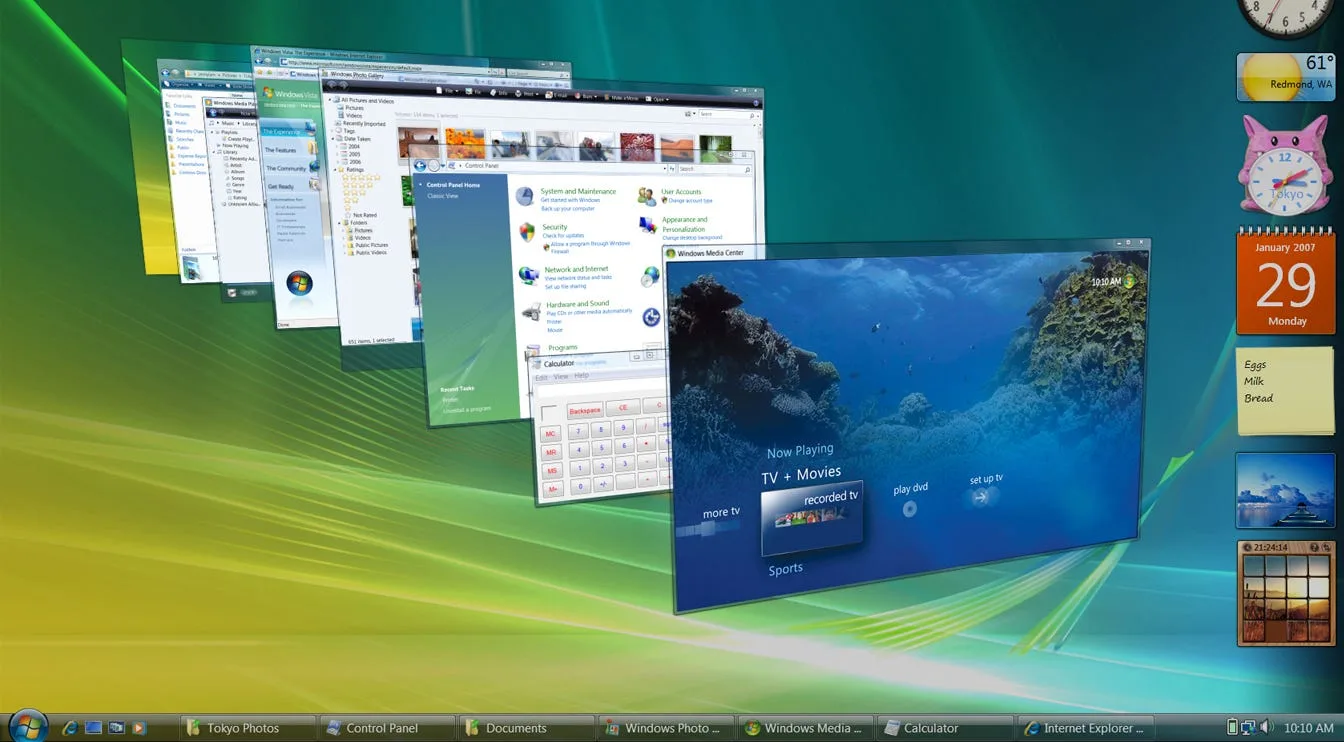
The development process of Windows Vista was a challenging period for Microsoft. The foundation of Vista was laid shortly after the release of Windows XP in 2001. Initially, this operating system, codenamed “Longhorn,” was planned as an evolutionary update, building on XP’s features. However, as the project progressed, its scope expanded, transforming it into a large-scale operating system with substantial changes. This led to delays and restarts in the project. With Vista, Microsoft aimed to enhance security while delivering a more modern user interface.
One of the biggest challenges during the development process was the constantly expanding codebase, which became increasingly difficult to manage. Significant issues arose, especially in maintaining software consistency due to the security improvements and new features being added. In 2004, Microsoft decided that the project in its current state was unsustainable and restarted development, building the new Vista version on the Windows Server 2003 kernel instead of “Longhorn.” This decision resulted in some features being cut and extended the development timeline. However, during this time, significant innovations were introduced, such as the Aero interface, a new security model (UAC), and improved search functionality.
When the final version of Vista was released on January 30, 2007, it didn’t fully meet the revolutionary expectations Microsoft had set, but it did offer a substantial change. However, performance issues, hardware compatibility problems, and high system requirements led to mixed reactions from users. The chaos experienced during the development process made it difficult for Vista to achieve the success it was aiming for in the market. Nevertheless, Vista provided valuable lessons for Microsoft and contributed significantly to the development of Windows 7. Vista laid the groundwork for modern interfaces and security approaches, paving the way for subsequent Windows versions.







